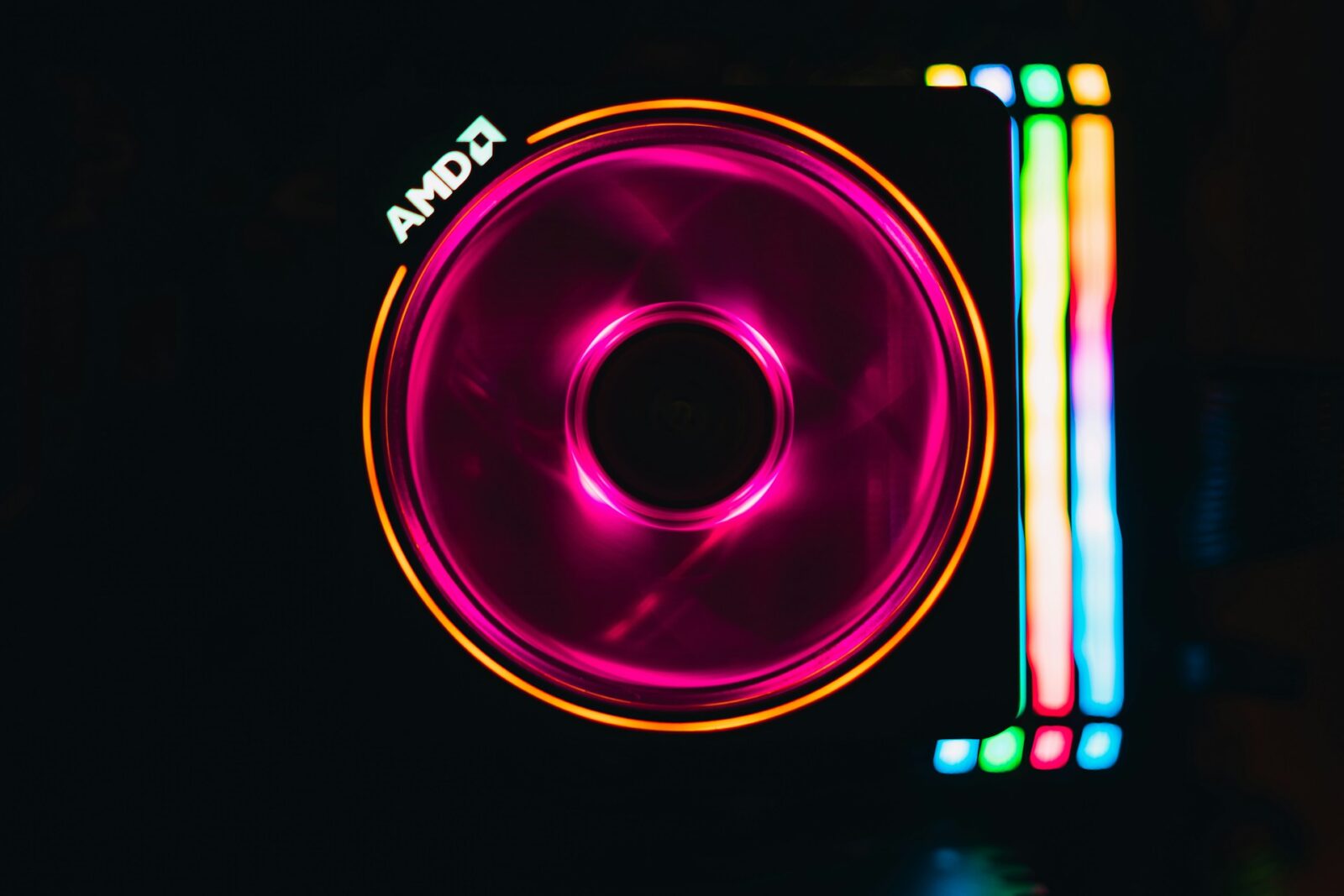AMD’s Bold AI-Driven Growth Vision
The race to dominate the artificial intelligence (AI) hardware market is heating up — and Advanced Micro Devices (AMD) is making its move. The semiconductor powerhouse expects data center revenue to soar by 60% over the next three to five years, signaling a bold new chapter in its competition with Nvidia (NVDA) and Intel (INTC).
As global demand for AI computing skyrockets, AMD is positioning itself as a central player in powering next-generation data centers. With CEO Dr. Lisa Su forecasting a $1 trillion total addressable market (TAM) for AI data centers, the company is clearly betting on a future where high-performance chips drive everything from large language models to sovereign AI networks.
AMD’s Data Center Revenue Forecast: A 60% Leap Ahead
AMD currently projects its data center revenue—which stood at $16 billion in 2025—to climb by 60% in the next few years. This growth trajectory reflects both expanding AI workloads and AMD’s strategic push to capture a larger slice of the enterprise computing pie.
At its Financial Analyst Day in New York, AMD executives outlined a plan to outpace broader market growth through aggressive investment in AI-driven infrastructure and deeper collaboration with hyperscale clients. The company’s data center division is poised to become its primary growth engine, accounting for the bulk of its revenue expansion in the years ahead.
AI Data Centers: The Trillion-Dollar Opportunity
According to Lisa Su, the total addressable market for AI data centers is expected to balloon to $1 trillion within five years. This includes demand across GPUs, CPUs, networking hardware, and AI accelerators, as enterprises and governments race to build computational capacity for AI applications.
This figure underscores the sheer scale of transformation happening in the digital infrastructure landscape. From OpenAI’s supercomputing needs to cloud-based AI model training, every major tech player is expanding its data footprint — and AMD aims to be at the heart of that buildout.
AMD’s Financial Outlook: Growth Across Every Segment
AMD’s CFO Jean Hu reinforced the company’s optimism, projecting overall revenue growth of 35% over the next five years from an estimated $34 billion in 2025. The majority of that growth will stem from data center operations, reflecting AMD’s strong momentum in AI and enterprise cloud services.
Hu also revealed ambitious margin goals:
- Gross margins: 55%–58%
- Operating margins: Over 35%
These figures suggest that AMD expects strong profitability as it scales AI hardware production and captures a larger share of global data infrastructure spending.
Strategic Partnerships Fueling AMD’s AI Momentum
AMD’s surge in the AI market isn’t happening in isolation. The company recently announced major data center deals, including:
- A 6-gigawatt infrastructure partnership with OpenAI, beginning in 2026.
- A plan to supply 50,000 data center chips to Oracle for cloud expansion.
While Lisa Su stopped short of announcing new deals during the event, she hinted that AMD is pursuing “multiple gigawatt-scale projects” across AI-native companies, hyperscalers, and sovereign AI initiatives. These partnerships highlight AMD’s ability to scale beyond hardware — toward complete AI computing ecosystems.
MI450 and MI500: The Next-Gen AI Chip Lineup
AMD’s roadmap continues to impress investors and developers alike. The company’s upcoming MI450 series and MI500 series chips are designed to deliver next-generation performance for AI inference and training. While specific technical details remain under wraps, early indicators suggest massive improvements in throughput, energy efficiency, and parallel processing power.
These advancements position AMD as a legitimate rival to Nvidia’s H100 and upcoming H200 GPUs, giving hyperscalers more options and driving down costs across the AI compute market.
AMD’s Dual-Engine Strategy: GPUs and CPUs Driving Growth
While AMD’s GPUs are at the forefront of the AI revolution, its data center CPUs are also key drivers of growth. The company expects its server processor market share to rise from 40% to 50% within five years, largely by winning business from Intel, which continues to navigate a long-term turnaround effort.
AMD’s EPYC processors remain some of the most power-efficient and performance-optimized CPUs available, giving the company an edge in both AI and general-purpose cloud computing environments.
Addressing Industry Concerns: Power and Financing Challenges
As AI data centers become more power-intensive, analysts have raised questions about the energy requirements and capital demands of large-scale deployments. Critics wonder whether companies like OpenAI can fund the infrastructure needed for such massive computing expansion.
Dr. Su addressed these concerns head-on, emphasizing the long-term sustainability of AI investments:
“This is a very unique moment in AI. We shouldn’t be shortsighted about the returns or financing. If AI usage grows as expected, there will be plenty of funding,”
— Lisa Su, CEO, AMD
Her comments reflect a broader industry belief: AI-driven innovation is not just a trend — it’s a multi-decade technological paradigm that will continue to attract massive global investment.
Client and Gaming Divisions Still in Play
While data centers dominate AMD’s growth narrative, the company hasn’t forgotten its client and gaming segments. AMD expects 10%+ growth in this category over the next five years, largely through increased market share in PCs and gaming consoles.
As AMD continues to chip away at Intel’s dominance in consumer markets, the company’s strategy of cross-leveraging R&D between gaming and AI hardware is paying off, delivering performance breakthroughs across multiple product lines.
AMD Stock Performance: Outpacing Rivals
AMD’s confidence is mirrored in its stock performance. As of late 2025:
- AMD stock has soared 96% year-to-date and 61% over the past 12 months.
- Nvidia, by comparison, has gained 43% year-to-date and 32% over the same period.
These gains demonstrate strong investor confidence in AMD’s execution and its growing reputation as a credible alternative to Nvidia in the AI acceleration space.
AMD’s Vision for the Future of AI Infrastructure
AMD’s 60% data center revenue forecast is more than a financial projection — it’s a strategic declaration. The company is positioning itself at the intersection of AI innovation, data infrastructure, and cloud computing, aiming to redefine what’s possible in high-performance computing.
By combining next-generation chips, strong partnerships, and a relentless focus on efficiency, AMD is emerging as a true AI infrastructure powerhouse. As the global data center market races toward the trillion-dollar mark, AMD’s steady expansion signals a future where AI and advanced computing power drive every major innovation — and AMD will be one of the engines making it happen.
Frequently Asked Questions (FAQs)
1. What is AMD’s forecast for data center revenue growth?
AMD expects its data center revenue to increase by 60% over the next three to five years, driven by AI infrastructure demand.
2. How does AMD plan to compete with Nvidia in AI chips?
AMD’s MI450 and MI500 series GPUs are designed to challenge Nvidia’s dominance with performance and scalability advantages.
3. What is the total addressable market (TAM) for AI data centers?
AMD estimates the TAM for AI data centers will reach $1 trillion within five years, covering GPUs, CPUs, and networking.
4. Which major companies are partnering with AMD?
Notable partners include OpenAI and Oracle, both launching large-scale data center projects using AMD hardware.
5. What are AMD’s margin targets for the next five years?
The company expects gross margins between 55%–58% and operating margins above 35%.
6. How is AMD performing compared to Nvidia and Intel?
AMD’s stock and market share growth have outpaced both Nvidia and Intel over the past year, reflecting rising investor confidence.






